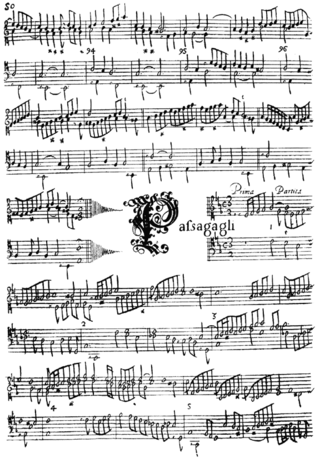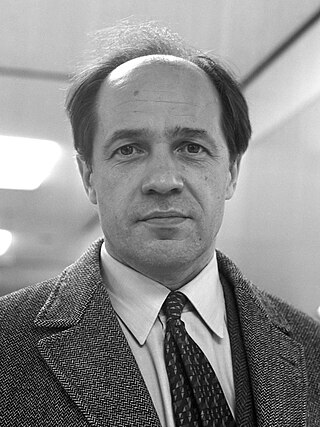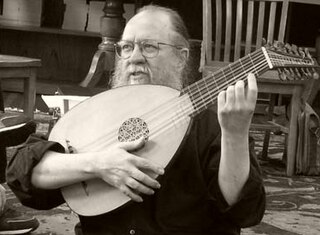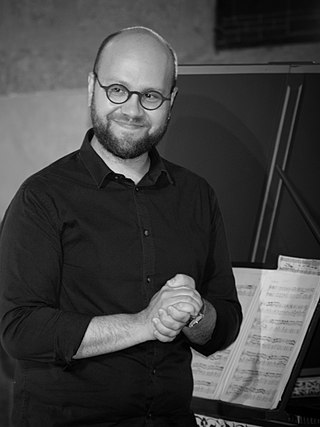
Denis Gaultier was a French lutenist and composer. He was a cousin of Ennemond Gaultier.

The passacaglia is a musical form that originated in early seventeenth-century Spain and is still used today by composers. It is usually of a serious character and is typically based on a bass-ostinato and written in triple metre.

Pli selon pli is a piece of classical music by the French composer Pierre Boulez. It carries the subtitle Portrait de Mallarmé. It is scored for a solo soprano and orchestra and uses the texts of three sonnets of French symbolist poet Stéphane Mallarmé and single lines from two of his other poems. At over an hour, it is Boulez's longest work.

Patrick O'Brien was an American guitarist and lutenist born in New York. He was a recording artist, but was best known as a pedagogue in the field of early plucked instruments in America, and an expert in musicians' hand anatomy. He has worked with musicians on many instruments, reworking their technique around repetitive stress injuries and breakdowns of coordination.
Louis Couperin was a French Baroque composer and performer. He was born in Chaumes-en-Brie and moved to Paris in 1650–1651 with the help of Jacques Champion de Chambonnières. Couperin worked as organist of the Church of St. Gervais in Paris and as musician at the court. He quickly became one of the most prominent Parisian musicians, establishing himself as a harpsichordist, organist, and violist, but his career was cut short by his early death at the age of thirty-five.
Johann Jakob Froberger was a German Baroque composer, keyboard virtuoso, and organist. Among the most famous composers of the era, he was influential in developing the musical form of the suite of dances in his keyboard works. His harpsichord pieces are highly idiomatic and programmatic.

Jean-Henri d'Anglebert was a French composer, harpsichordist and organist. He was one of the foremost keyboard composers of his day.
Unmeasured or non-measured prelude is a prelude in which the duration of each note is left to the performer. Typically the term is used for 17th century harpsichord compositions that are written without rhythm or metre indications, although various composers of the Classical music era were composing small preludes for woodwind instruments using non-measured notation well into the 19th century. The form resurfaced in the aleatory music of the 20th century, where various other aspects of performance are also left to free interpretation.
Jan Antonín Losy, Count of Losinthal ; also known as Comte d'Logy, was a Bohemian aristocrat, Baroque lute player and composer from Prague. His lute works combine the French style brisé with a more Italian cantabile style. He was probably the most significant lutenist-composer in Bohemia at the height of the lute's popularity there.

Roman Turovsky-Savchuk is an American artist-painter, photographer and videoinstallation artist, as well as a lutenist-composer, born in Ukraine. His musical works were published under various pseudonyms, including Johann Joachim Sautscheck.
Luca Pianca is a Swiss musician-lutenist whose specialty is archlute. In 1985 he co - founded Il Giardino Armonico., a pioneering Italian early-music ensemble based in Milan. He has premiered works by the contemporary lutenist-composer Roman Turovsky-Savchuk at international festivals, and received numerous international awards for his recordings.

Charles Mouton was a French lutenist and composer.
Jacques Gallot was a French lutenist and composer.
François Dufault was a French lutenist and composer.
Charles Fleury, Sieur de Blancrocher was a French lutenist. Known principally under the name Blancrocher, he was one of the leading performers of his day, active in Paris. Whether he composed or not is unknown; a single dance movement survives, attributed to him, in the so-called Manuscrit Vaudry de Saizenay. His name became well known in the late 20th century, for after his sudden death as many as four major composers wrote tombeaux in his memory: lutenists Denis Gaultier and François Dufaut, and harpsichordists Louis Couperin and Johann Jakob Froberger. The latter witnessed Blancrocher's death, and the lutenist apparently died in Froberger's arms.
Style brisé is a general term for irregular arpeggiated texture in instrumental music of the Baroque period. It is commonly used in discussion of music for lute, keyboard instruments, or the viol.

Pierre Gallon, born on March 27, 1986 in Falaise (Normandy), is a French harpsichordist, organist, and fortepianist.







